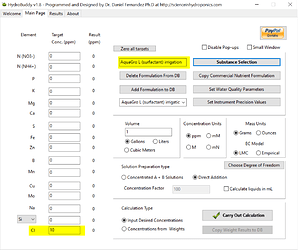Now that the author of everyone’s favorite nutrient formation software, HydroBuddy, Dr. Daniel Fernandez, P.h.D (@danielfp) has joined Future4200, we need an official HydroBuddy thread ![]()
Welcome, Daniel! ![]()
I foresee this thread as a place to discuss HydroBuddy’s use, submit feature requests to Daniel (maybe with a poll to help him gauge interset), and share recipes. And perhaps most importantly, for newbies to become confident with its use and in custom nutrient formulation by asking questions from those of us with formulation experience who have used it for years.
For those living under a rock or giant THCa ![]() , you can read about (and download) HydroBuddy here, Daniel’s background and mission here, his consultation services here, and book time with him here.
, you can read about (and download) HydroBuddy here, Daniel’s background and mission here, his consultation services here, and book time with him here.
Daniel has “a bachelor’s degree in chemistry and a masters and Ph.D. in nanoscience and nanotechnology.” But he must have missed the class on spelling ![]() , unless he has a “masters” degree
, unless he has a “masters” degree ![]() instead of a “master’s” degree
instead of a “master’s” degree ![]() .
.
He has a fantastic blog here, which:
[…] attempts to educate people about hydroponics and the many scientific aspects of this type of plant culture. Through my posts I attempt to share my knowledge about hydroponics and the way plants work as well as how to prepare your own solutions, additives and growing systems for your hydroponic crops. As a chemist I have acquired an in-depth understanding of how things work within a hydroponic crop and I will do my best to share this knowledge with as many people as possible.
And he also makes fantastic videos for his YouTube channel, and he often posts relevent publihsed reserach and useful infomration on his IG @science_in_hydropoincs.
To kick off this thread, I will post one HydroBuddy feature request, one usage tip for substance database entry, two questions, and one comment on HydroBuddy version 1.99:


